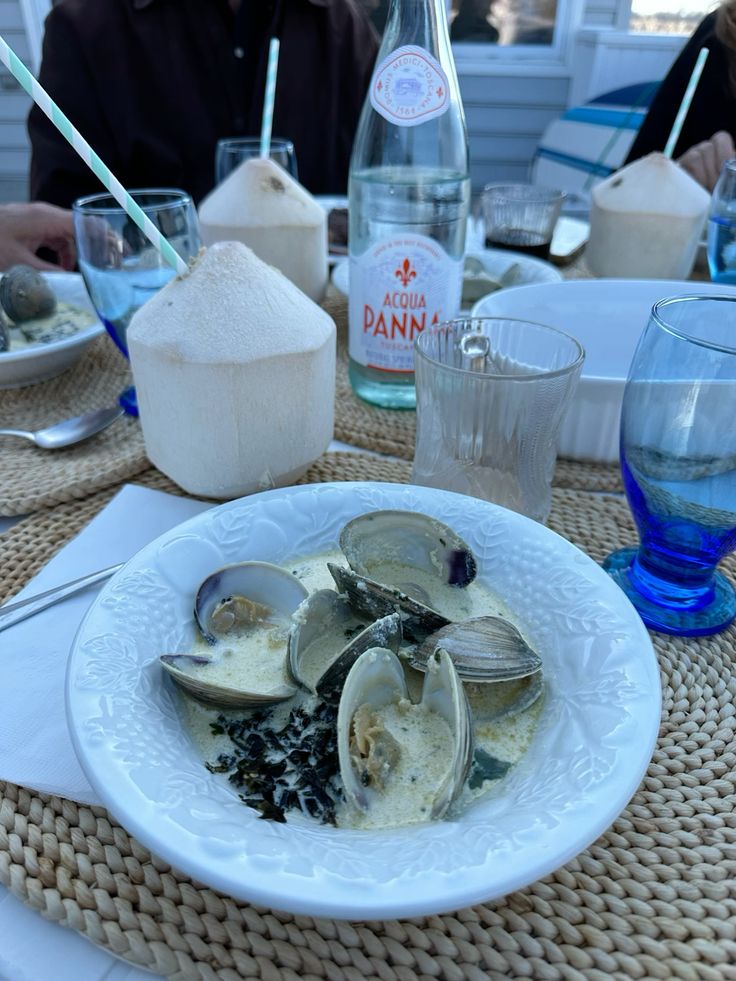Summary:
During a beachside trip to Charleston, SC in October, I stumbled upon a beautiful surprise—ripe prickly pear cactus fruit growing wild. What started as a curious forage quickly turned into a full-blown obsession. Here’s how I harvested and handled these colorful fruits safely, and all the fun, naturally pink recipes (and beauty hacks!) they inspired.
It all started with a walk along the beach near Charleston, South Carolina last October. The air was still warm, the sand golden, and the coastal breeze carried that subtle mix of sea salt and southern charm that always makes me feel like I’m home. I wasn’t expecting to stumble on anything in particular—just enjoying an unplugged moment, soaking in the shoreline—but then, like a pop of color on a painter’s canvas, I spotted a cluster of cacti growing wild along the dunes.
They were covered in these bright, almost jewel-toned fruits. Some were a rich magenta, others deep red with a hint of orange. My curiosity was instantly piqued. I recognized them as prickly pears—something I’d only ever seen in stores or maybe in a fancy margarita. But here they were, ripe and sun-soaked, just steps from the ocean.
Naturally, I had to try harvesting a few. And just like that, a new obsession was born.
A Word of Caution Before You Forage
Before I get too deep into the juicy details (literally), I want to pause for a quick but important reminder: only forage where you’re allowed to. Not all wild land is free for picking. Some areas are protected, and harvesting plants—even something as abundant as cactus fruit—can be restricted or outright illegal. Always do your research, respect nature, and when in doubt, ask a local ranger or land authority.
The Art (and Safety!) of Picking Prickly Pears
Let me be completely clear: you cannot, under any circumstances, pick these fruits with your bare hands. Even if it looks like you can avoid the visible clusters of spines, don’t be fooled. Prickly pears are covered in tiny, hair-like spines called glochids. They’re nearly invisible, incredibly irritating, and once embedded in your skin, they can be really hard to remove—often requiring tweezers and a lot of patience. Trust me on this one.
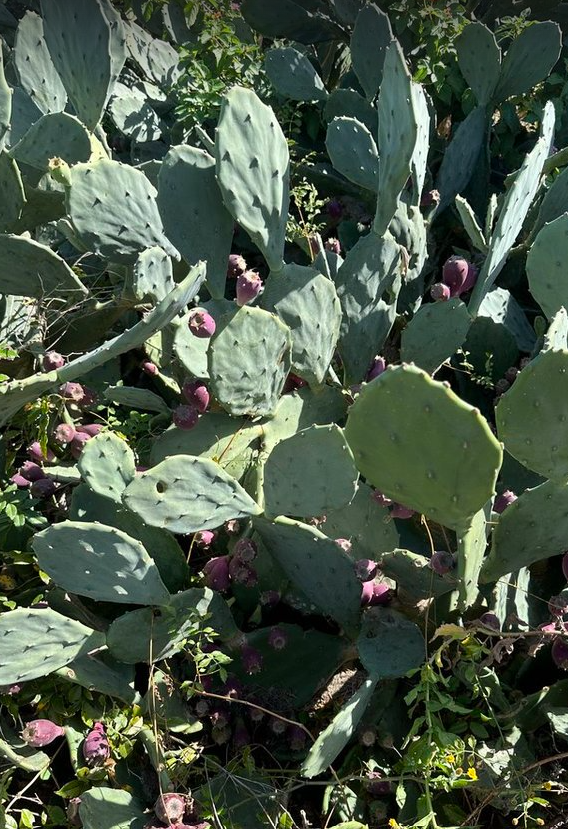
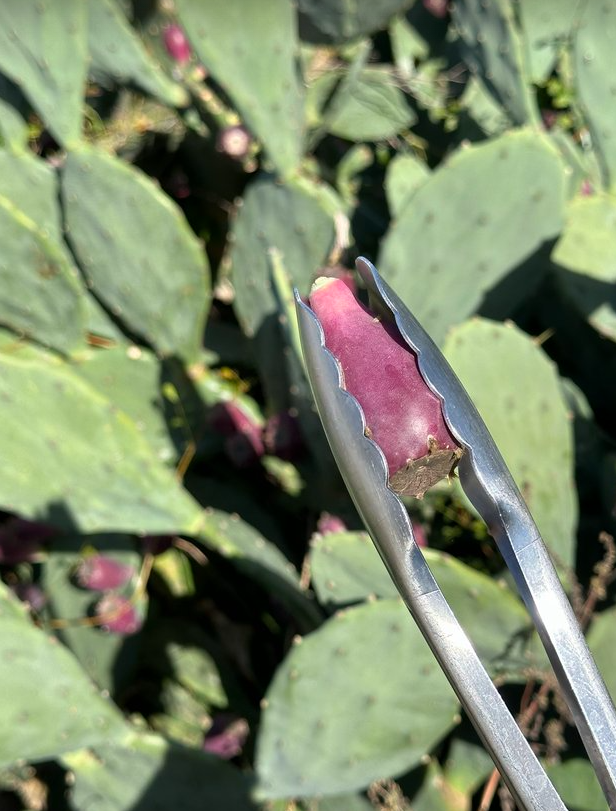
Here’s my go-to setup for safe picking:
- A pair of sturdy tongs
- Thick gardening gloves (not the flimsy kind!)
- A small basket or canvas bag to collect the fruits
With this combo, I was able to gather a nice little haul without injury. I filled my bag carefully, admiring how each fruit seemed to glow under the autumn sun. By the time I got back to where I was staying, I had more than enough to experiment with.
De-Spining and Preparing the Fruit
Once I was home with my fresh-picked prickly pears, it was time for step two: safely removing the glochids. While you can rub them off with a brush or even scrape them off, I discovered that searing them is by far the easiest and most effective method.
I took each fruit and held it with a fork over a gas burner (you could also use a lighter or hot pan). When the glochids are burned off, the skin turns slightly shiny, almost like it’s been polished. That’s your visual cue that it’s safe to handle. You don’t have to sear them, but it makes the whole peeling process a lot more pleasant.
Here’s my full method for getting to the delicious center:
- Use a fork to stab the fruit and transfer it to a cutting board.
- With the fork still holding it steady, use a knife to cut the pear lengthwise down the middle—hotdog style.
- With a spoon in your other hand, scoop out the fruit. If you want to maximize your haul, gently scrape the inside of the skin to get every last bit of flesh.
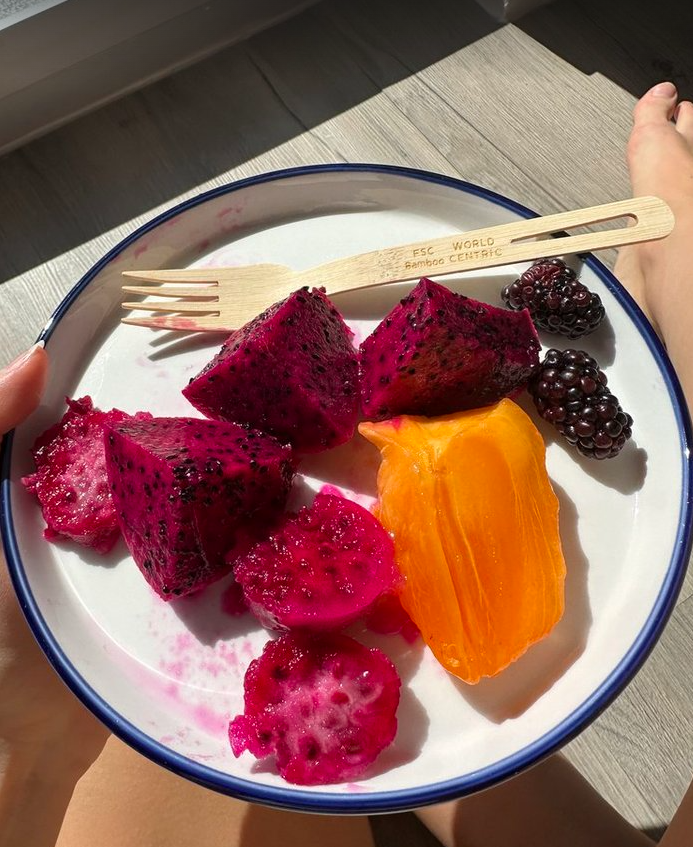
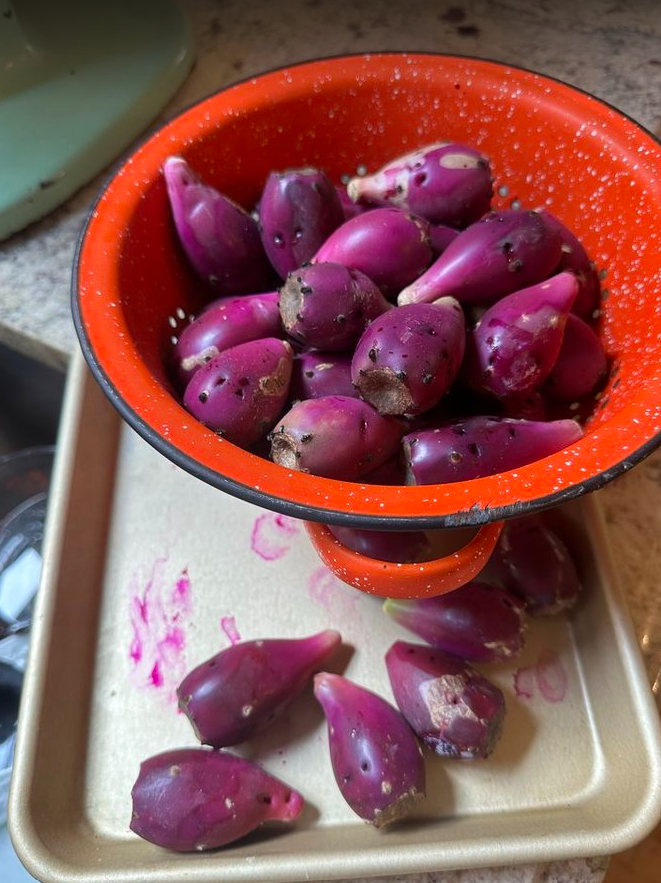
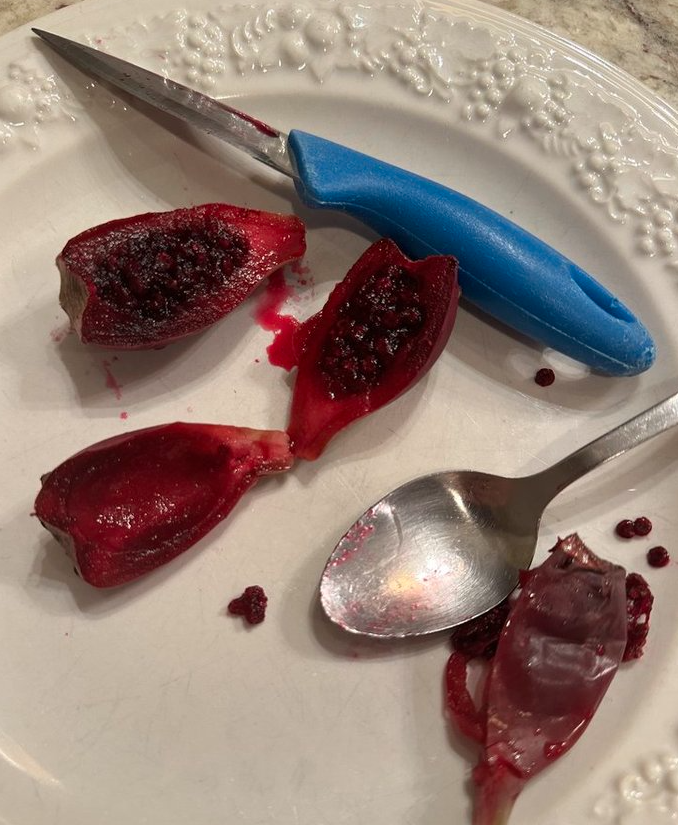
The Flavor—and a Small Word of Warning
The taste? Tart but refreshing. It has a bright, slightly tangy flavor that wakes up your palate, with just enough sweetness to keep it balanced. The texture is soft and juicy, with crunchy seeds throughout.
Now, about those seeds: they’re hard. You can chew them if you like, or just swallow them whole. I found that once I got used to them, they didn’t bother me at all. That said, don’t go overboard. Eating too many prickly pears at once can cause digestive upset. So enjoy in moderation, especially if you’re new to them.
Creative Ways I’ve Used Prickly Pears
Once I got past the prep work, I couldn’t stop dreaming up uses for these gorgeous fruits. Their vibrant color, subtle flavor, and juicy texture make them surprisingly versatile. Here are some of my favorite ways to enjoy them:
- Natural Food Dye
A few drops of prickly pear juice will turn anything the most beautiful vibrant pink. I’ve used it to tint drinks, swirl into vanilla ice cream, mix into icing, color creamy dips, and even dye the filling in deviled eggs. The color is natural, food-safe, and totally stunning every time. - In Cocktails
I mixed a splash of fresh prickly pear juice into tequila and lime for a stunning twist on the classic margarita. It also worked beautifully in vodka lemonades and even gin and tonics. A little goes a long way in both flavor and color. - In Smoothies
I froze small spoonfuls of the fruit in individual snack-sized bags. Now I just toss a bag into the blender with bananas, coconut milk, or berries for an energizing, fiber-rich boost. It adds the prettiest pink hue and a touch of tartness. - In Lemonade
Just a little of the juice turns plain lemonade into a rosy, almost tropical treat. The subtle sweetness of the pear plays really well with the tartness of lemon. Bonus: it’s visually stunning and perfect for summer gatherings. - Nature’s Makeup
This one was a fun discovery: a little bit of juice on your fingertip makes a gorgeous natural lip and cheek stain. Just dab and blend. The color is a soft berry-pink and looks so fresh and dewy on skin. No chemicals, no added fragrance—just cactus fruit doing its thing. - For Crafts and Natural Dyeing
The same bold pigment that works in food and makeup also makes a fantastic natural dye for fabric, paper, or even Easter eggs. I’m already dreaming up ways to use prickly pear juice for handmade cards or dip-dyed napkins. It’s such a fun, earthy alternative to synthetic dyes.
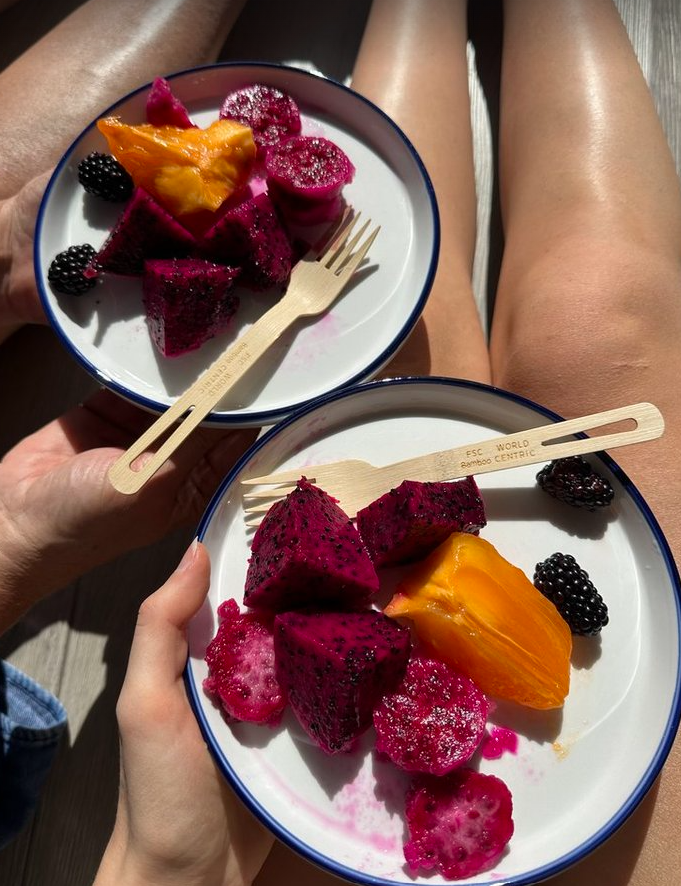

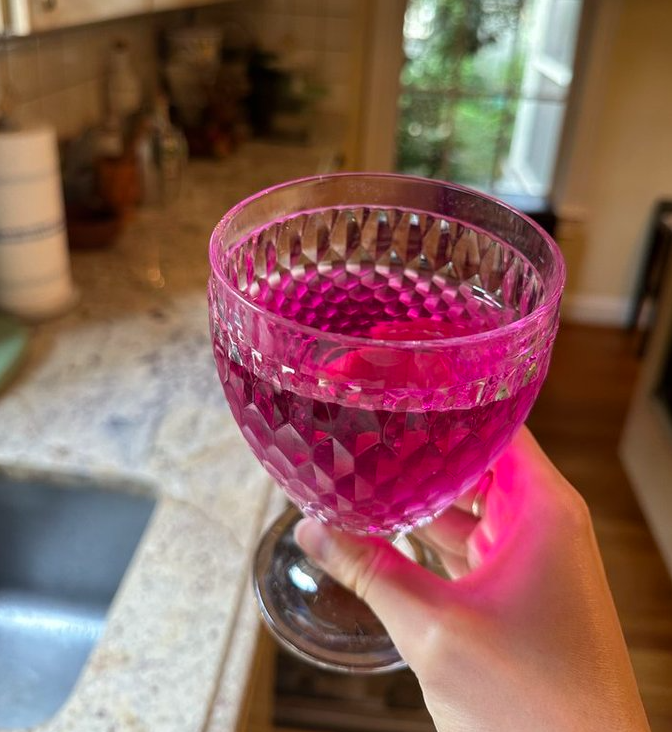

Final Thoughts
If you’ve never worked with prickly pears before, I highly recommend giving them a try. Whether you find them wild like I did, or buy them from a market, there’s something magical about this fruit. From the color to the taste to the ritual of preparing it, it’s the kind of food that makes you slow down and appreciate every step.
It also reminded me of something I love about foraging: nature is full of surprises, especially when we’re paying attention. One minute you’re on a beach stroll, and the next you’re hauling home a bag of neon fruit to turn into smoothies and skincare.
Have you ever tried prickly pear? Do you have a favorite way to use it? I’d love to hear your stories or recipes—drop them in the comments below or tag me on social media if you try any of the ideas in this post!
Until next time, happy foraging—and don’t forget your gloves.


